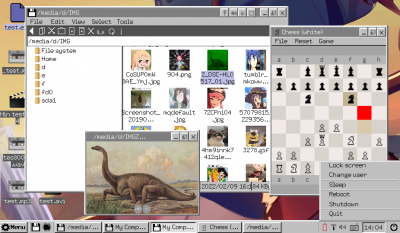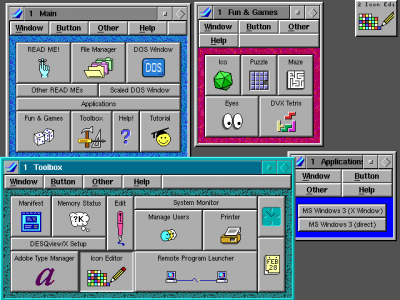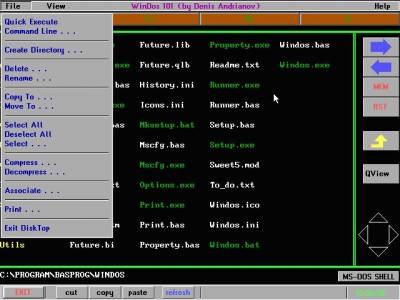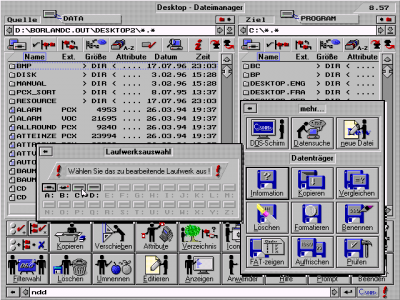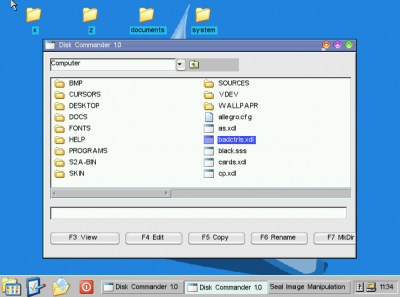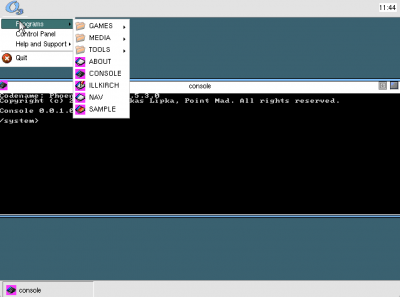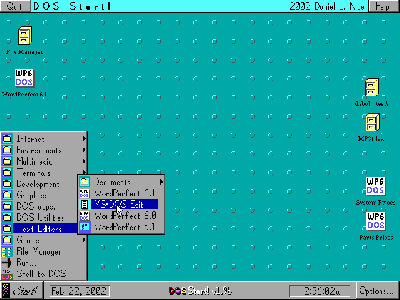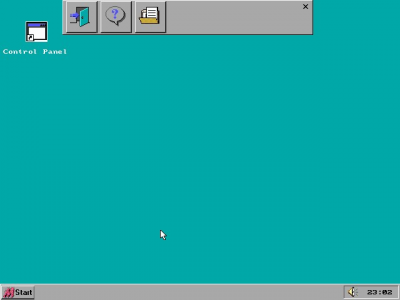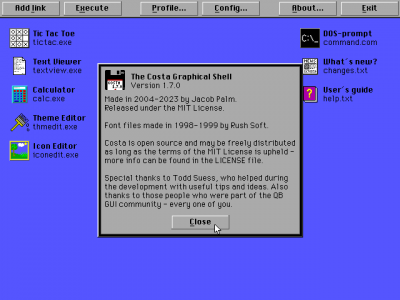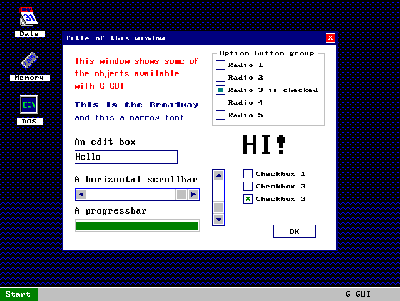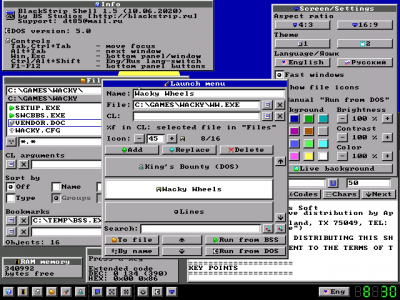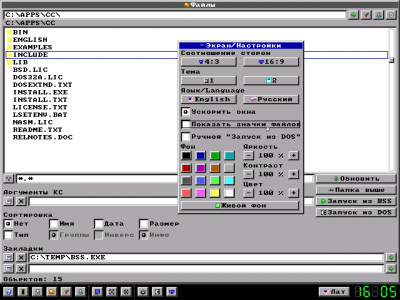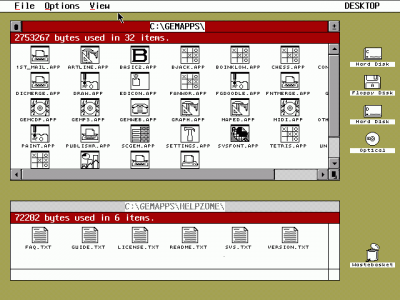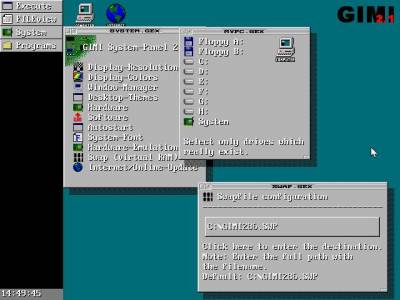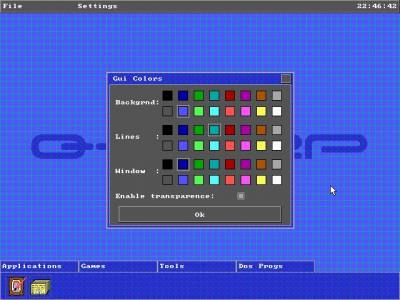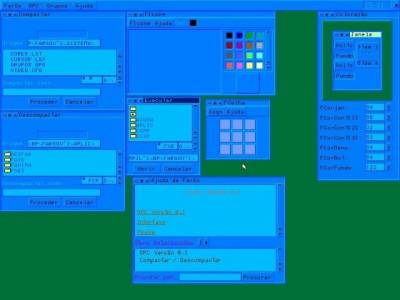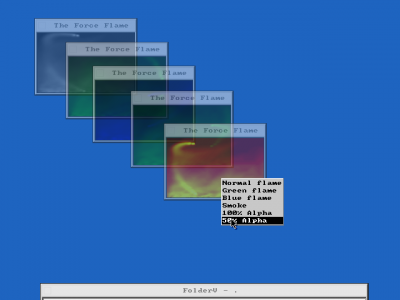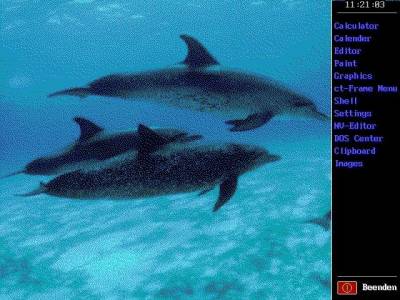MS-DOS did not have a built-in graphical shell, third-party programs provided a graphical user interface that made it easier for users to interact with the operating system. There were also several graphical user interfaces (GUIs) that were available for MS-DOS, which provided a full-screen graphical environment. These GUIs provided users with a more user-friendly interface for MS-DOS, and helped to pave the way for the widespread adoption of graphical operating systems such as Windows.
DOS GUI Shells
- Breadbox Ensemble Breadbox Ensemble has a Windows-95 like user interface with a task bar and start menu. Breadbox runs on top of DOS and targeted low-end computers that were not up to the task of running Windows.
- Xcom is a crossplatform GUI system: a multi-windowed, multi-tasking environment. Xcom allows you to browse, copy, view and manage your files, start and stop programs, watch and listen basic media content and music.
- DESQView X DESQview/X Software Ports DESQView, from Quarterdeck, was a DOS application multi-tasker and in later versions functioned as an X client for applications on remote UNIX systems. It competed against IBM Topview. The original DESQ was just a task switcher, but subsequent versions offered preemptive multitasking of well behaved DOS programs on real-mode 8088 PCs. It gained popularity when DESQView 386 added virtual x86 support. This enabled the ability to multi task many poorly behaved programs, and was often used on BBSes due to its excellent COM port handling. It was later overtaken by OS/2 and Windows.
- WinDOS WinDos is powerful GUI file manager. Supports ZIP, RAR, ARJ, PAK, LHA. SVGA Desktop with customizable menus and stunning icons.
- Desktop 2 DESKTOP is a graphical user interface for DOS, which ones used to be a commercial shell like MS-Windows™ 3.0 or GEOS™. However, due to the dominance of MS-Windows 95, we were forced to stop publishing the program, so it's free now…
- Seal2 SEAL is a 32-bit graphical user interface (GUI) for DOS. It supports many advanced features, such as a dynamic linking system (XDL), sound and other multimedia functions (SFA), multilingual support, and more!
- oZone GUI is a mutliplatform desktop enviroment which runs under DOS, Microsoft Windows and Linux. Applications based and compiled for oZone run with no need to recompile on all supported platforms at the level of machine code.
- DosStart is a graphical DOS environment for launching programs and managing files. It is designed to be highly customizable and flexible to user's preferences and needs. It does not occupy memory while your programs are running. In other words, there is no DOS program not compatible with DosStart.
- Millennium OS Developed in 1999/2000 by Jonathan Thorpe, Millennium OS was a GUI written in QuickBASIC 4.5 as a hobby project. It was designed to be run on MS-DOS with Windows capabilities.
The somewhat interesting feature of the first edition was the ability for it to run Windows programs through a Windows 3.1 environment which was called the “DOS Extender”. The creators had plans for the GUI's future development but were unsuccessful and never happened. In 2003, Todd Suess saw this GUI and wanted to continue its development from the original version, the only version ever released by the original developers. Learning different techniques for GUI development and design, Todd began improving M-OS with small features and eventually re-designing the entire look and feel.
In April of 2004, Millennium OS had its first new feature: a wallpaper desktop background. New features were written in such as sound capabilities, corrections on program errors and bugs, and a combination of newer DOS programs to make the GUI more usable in the real world.
The GUI remained in development until 2006 when many of the capabilities of the project were seen to be almost impossible with QuickBASIC's functionality and usability. The project is available to be downloaded, tweaked, developed further, or any form of use that does not involve commercial use of the software. All project files are available for download and may be used freely.
- The Costa GUI is a program which runs on top of MS-DOS or compatible operating systems, and replaces the DOS-prompt with a clean, user-friendly interface - a so called GUI (Graphical User Interface). Costa comes with full mouse and keyboard support, and a bunch of useful accessories.
- G-GUI is a new GUI for the DOS operating system. It is a 65k TSR driver running in real mode with no additional memory required. G-GUI supports all video modes from standard VGA to true color SVGA. It can be used with any computer language for DOS applications. It offers a desktop, windows, buttons, menus, icons, BMP images, check-boxes, radio buttons, message boxes, list boxes, scroll bars, progress bars, multi-line edit boxes, text boxes, different fonts and cursors.
- BlackStrip Shell homepage multilanguage (eng and rus) GUI for: file system browsing in Files window, creating shortcuts for games/apps/files in Launch menu (F5), you can also create shortcut by selecting executable in Files window and pressing rocket-button at top-right, running EXE/COM/BAT files from shell by Enter (with 290k RAM occupied with shell in memory) or from clean DOS by Shift+Enter (freeing memory by shell termination with hint on screen like “type c:\games\game1\game.exe”) in Files and Launch menu windows editing files “byte by byte” with Editor window, view files as text/hexcodes. Press Enter in Files window on any non-executable file or Ctrl+Enter on executable file to open this file in Editor. Also you can press vial-button at top-right in Files window to open selected file.
- OpenGEM is a DOS GUI that seeks to combine FreeDOS and Digital Research GEM into a complete OS for low end machines.
- Gimi This is GIMI, the Graphical Interfaced Multitasking Interpreter. One of the few GUIs made in QuickBASIC featuring multitasking. This one has its own script language for making programs, damm fast SVGA modes, lots of programs, and more!
- Q-Step is a new GUI for dos written in QuickBasic. French GUI with some English mixed into it. The GUI makes use of a transparency-like method by dithering the color once with the background. The GUI has some basic programs and a couple of games which shows the full performance of the GUI. Q-Step is very customizable and simple to use. Although it is limited to 16 colors in SCREEN 12 mode, it makes use of its limitations to the maximum.
- FarSo is a Dos multitasker GUI, actualy in portuguese and in PASCAL. Currenctly its inactive.
- The Force is -as says in the title- a “multipurpose 32-bit graphical user interface and window manager”. That means that The Force is a program that provides a user interface made using graphical content, that can be used for many things (multipurpose), it's written in and for 32-bit processors and also it is a window manager (which manages overlapping windows). In other words it's a GUI.
- ct-FRAME is a desktop environment for DOS. It offers a lot of applications (e.g. calender, editor, file and a small office suite). Its the KDE/Gnome for DOS. It runs on every operation system.

